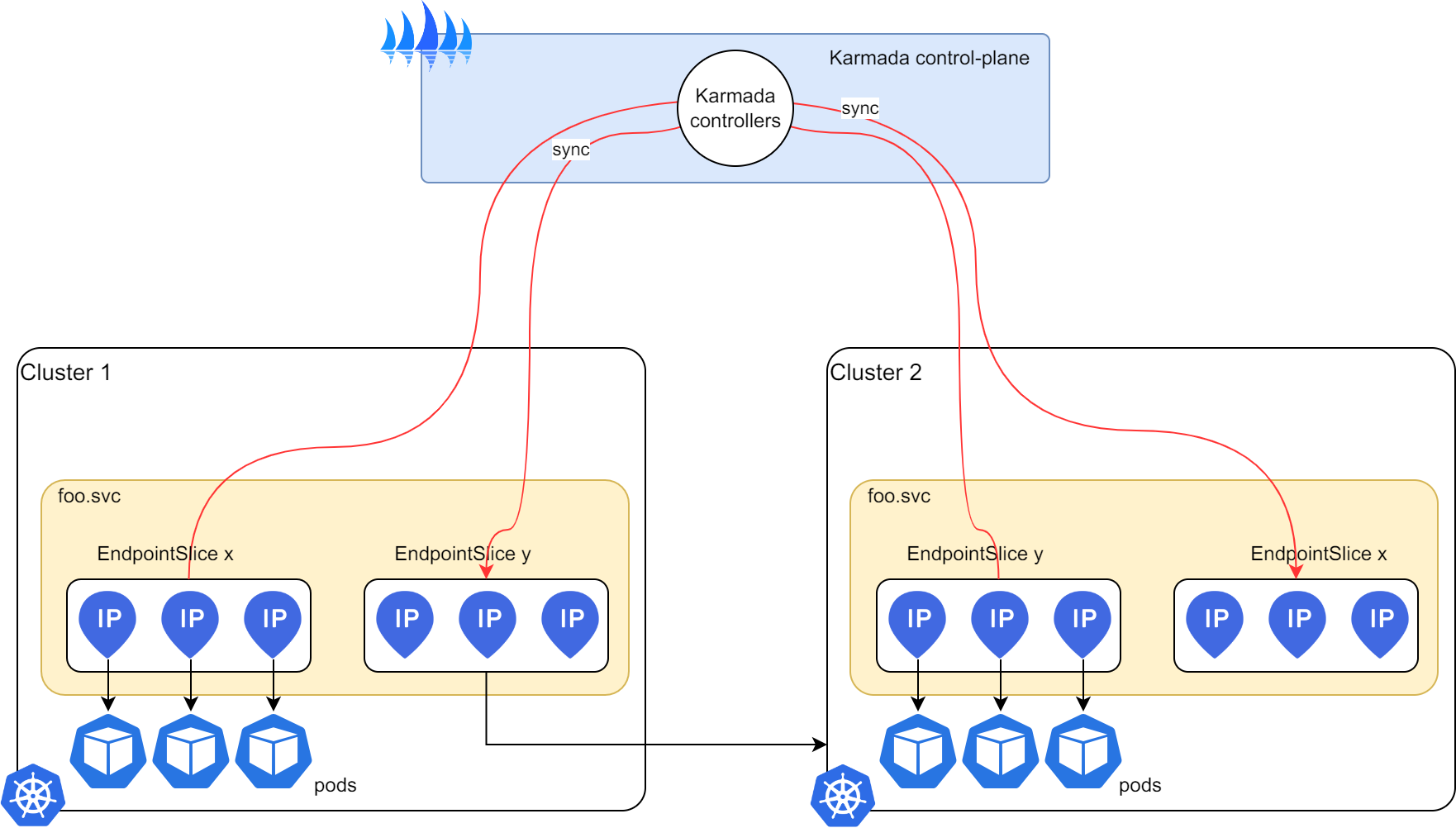Multi-cluster service with native service access
In Karmada, the MultiClusterService can enable users to access services across clusters with the native service domain name, like foo.svc, with the aim of providing users with a seamless experience when accessing services across multiple clusters, as if they were operating within a single cluster.

Once the network is connected between clusters, with MultiClusterService, the accessing will be directed to the active backend pods distributed across these clusters.
The MultiCluster Service is implemented as a Karmada API resource and multiple controllers, the resource determines the behavior of the controller. The multiple controllers, running within the Karmada control plane, sync the services' backend EndpointSlice resource between clusters, to add the multiple clusters' pods' IP to the services' backend.
How does a MultiCluster Service work?
To implement access service across multiple clusters with native service name, Karmada introduces multiple controllers to sync the services' backend EndpointSlice resource between clusters, they work as follows:

- Karmada will collect EndpointSlice resources from all target clusters, and sync them to the Karmada control plane.
- Karmada will sync the collected EndpointSlice resources to all target clusters, with attaching the EndpointSlice to the service.
- When users access through
foo.svc, the underlying network will route the request to the backend pods in the multiple clusters.
API Object
The MultiClusterService is an API in the Karmada networking API group. The current version is v1alpha1.
You can check the MultiClusterService API specification here.
What's next
If you configure MultiClusterService, you may also want to consider how to connect the network between clusters, such as Submariner.
For more information on MultiClusterService:
- Read Access service across clusters within native service name to know how to use MultiClusterService.